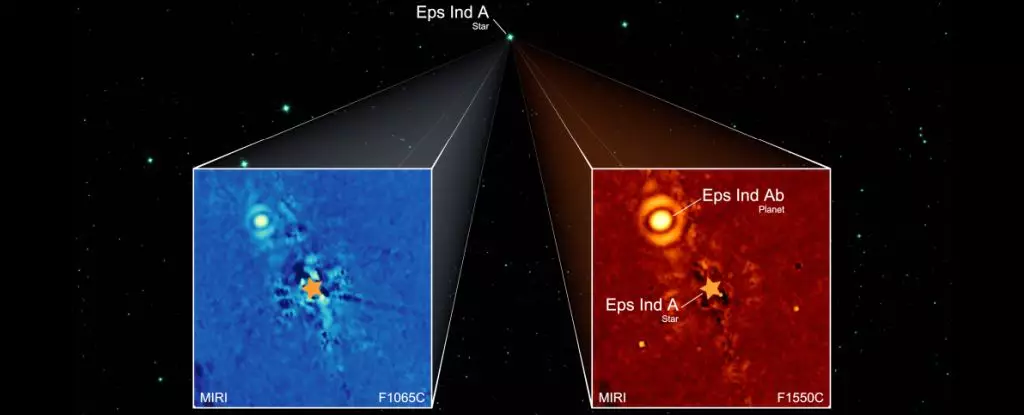The recent discovery of a new exoplanet named Eps Ind Ab has sent ripples of excitement through the astronomy community. What sets this gas giant apart is the fact that it has been imaged directly, separate from its host star, using the James Webb Space Telescope (JWST). This groundbreaking achievement marks a significant milestone in exoplanet science, as it opens up new avenues for exploration and investigation.
Eps Ind Ab offers a unique glimpse into the realm of exoplanets. As the first gas giant to be imaged by JWST without prior ground-based observations, this newfound world challenges our existing understanding of planetary systems. Situated at a distance comparable to Neptune’s orbit from the Sun, Eps Ind Ab orbits its star as a super-Jupiter, shrouded in frigid temperatures unlike any gas giant previously studied by JWST. This discovery paves the way for a deeper dive into the diverse landscapes of exoplanets beyond our solar system.
Traditionally, the detection of exoplanets has relied on indirect methods, such as observing the effects of planets on their host stars. However, direct imaging offers a more intimate look at these distant worlds, providing valuable insights into their composition, atmosphere, and orbital dynamics. While direct imaging remains a challenging feat, with only a few dozen exoplanets imaged to date, it holds immense potential for expanding our knowledge of alien planetary systems.
Eps Ind Ab’s discovery sheds light on the capabilities of JWST in unraveling the mysteries of distant exoplanets. By leveraging its advanced instruments, such as the Mid-Infrared Instrument (MIRI) and coronagraph, JWST enables astronomers to pinpoint and study exoplanets with unprecedented precision. In the case of Eps Ind Ab, JWST’s infrared capabilities played a pivotal role in unmasking the presence of this elusive gas giant orbiting Epsilon Indi A, a mere 12 light-years away from Earth.
As astronomers continue to analyze and observe Eps Ind Ab, they set their sights on uncovering more about its atmospheric properties and refining its orbital characteristics. Moreover, the researchers aim to expand their search for cold gas giants in nearby planetary systems, seeking to unveil hidden worlds that have eluded detection thus far. With each new discovery, the boundaries of exoplanet science are pushed further, opening up a world of possibilities for understanding the vast tapestry of exoplanetary systems that populate our galaxy.


Leave a Reply